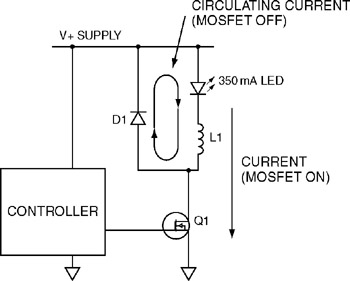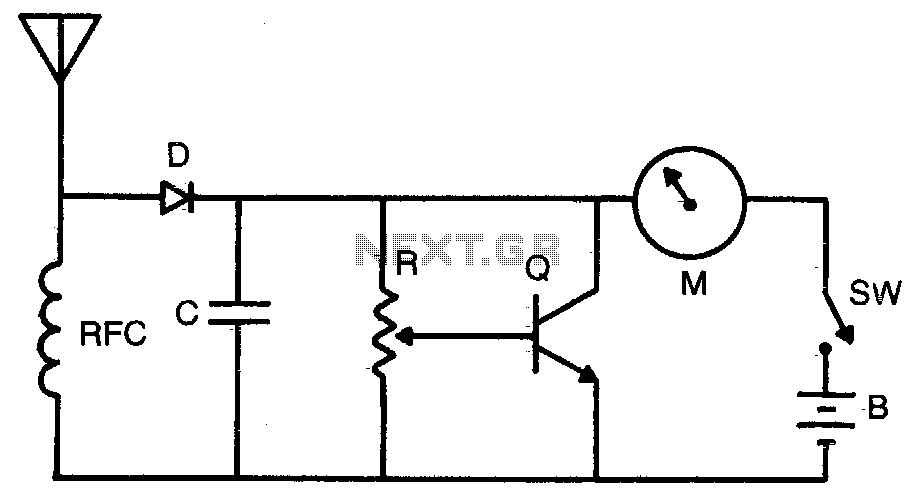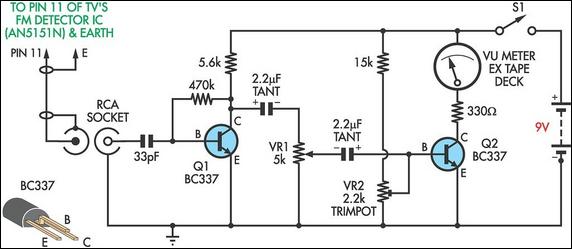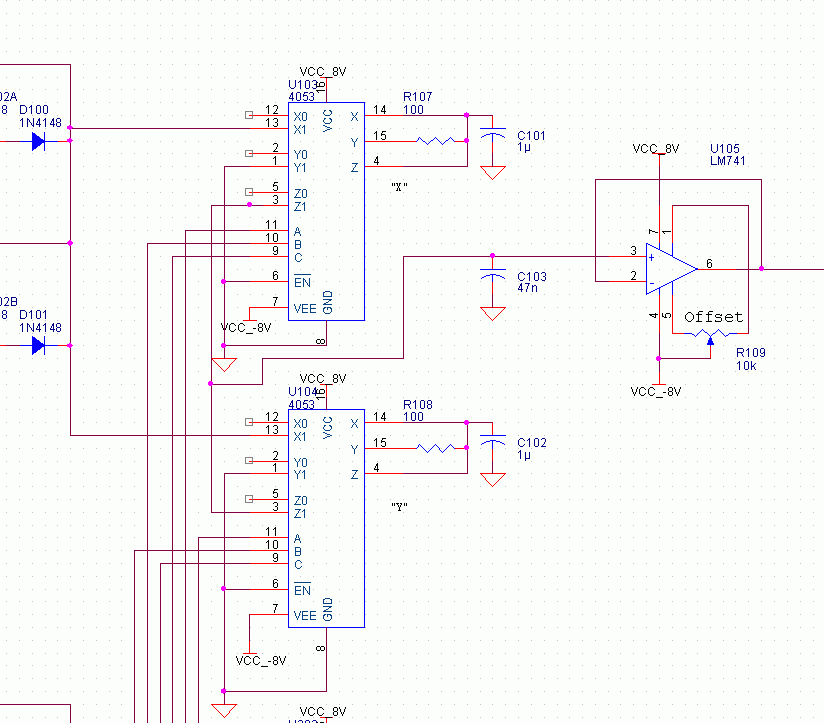
Led bar-dot level meter
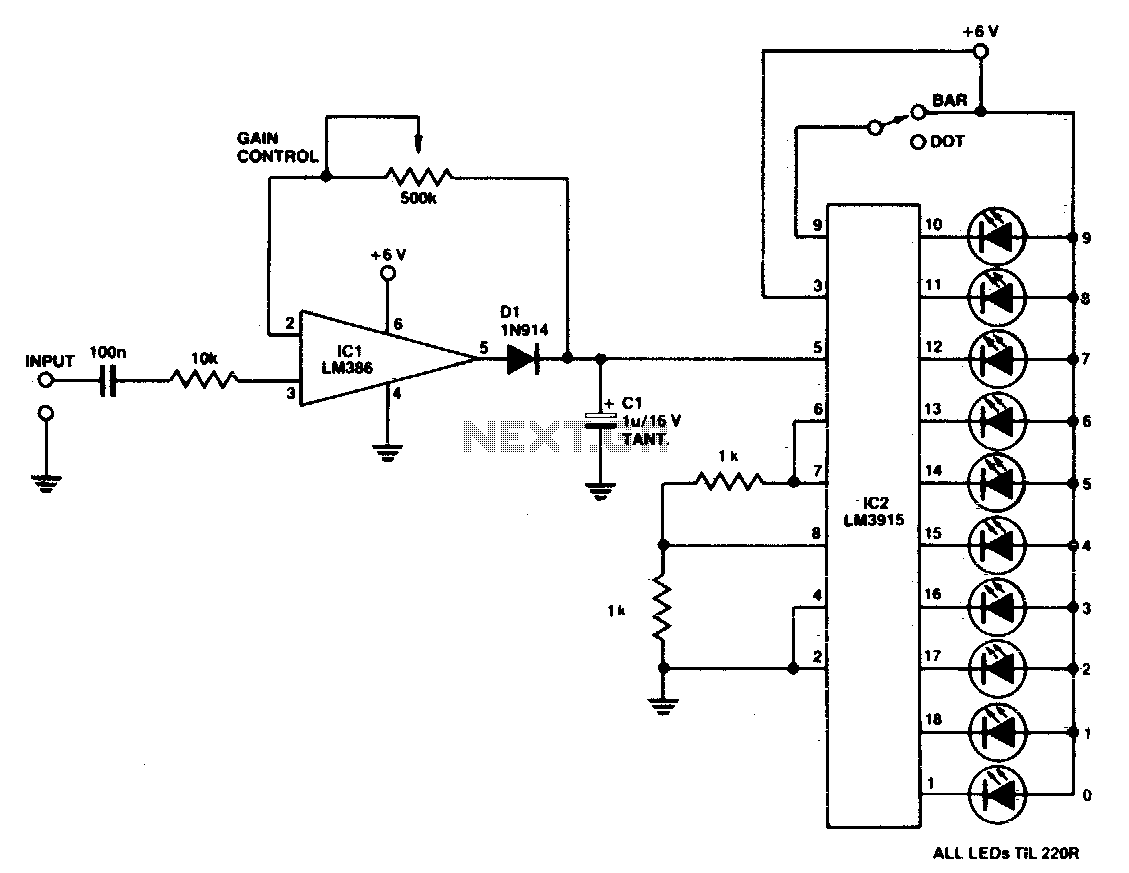
A simple power meter can be configured to provide a bar or dot display for a hi-fi system. Green LEDs are used for levels 0 to 7, yellow for level 8, and red for levels 9 to indicate peak power. A gain control is included to allow for calibration with the equipment being used. Additionally, since the unit consumes approximately 200 mA, it is recommended to use a power supply rather than relying on batteries.
The power meter circuit is designed to visually represent audio signal levels, making it suitable for hi-fi systems. The display consists of a series of LEDs arranged in a linear fashion, where each LED corresponds to a specific power level. The green LEDs illuminate for power levels ranging from 0 to 7, indicating normal operation. When the power level reaches 8, the yellow LED activates, serving as a warning that the signal is approaching its peak. Finally, the red LEDs light up for levels 9 and above, signaling that the system is at or exceeding its peak power threshold, which can help prevent distortion or damage to the audio equipment.
The gain control feature is critical for ensuring accurate readings across different audio devices. By adjusting the gain, users can calibrate the meter to match the output levels of their specific hi-fi system, allowing for precise monitoring of audio performance.
Given the unit's current draw of approximately 200 mA, a dedicated power supply is recommended to ensure stable operation. This can be achieved with a regulated DC power source, which will provide consistent voltage and current, essential for reliable performance. Battery operation could lead to fluctuations in power levels, potentially affecting the accuracy of the readings and the longevity of the battery.
Overall, this power meter circuit provides an effective solution for monitoring audio levels in hi-fi systems, with a focus on user-friendly visual indicators and calibration capabilities.A simple level of power meter can be arranged to give a bar or dot display for a hi-fi system. Use green LEDs for 0 to 7; yellow for 8 and red for 9 to indicate peak power. The gain control is provided to enable calibration on the equipment with which the unit is used Because the unit draws some 200 mA, a power supply is advisable instead of running the unit from batteries.
The power meter circuit is designed to visually represent audio signal levels, making it suitable for hi-fi systems. The display consists of a series of LEDs arranged in a linear fashion, where each LED corresponds to a specific power level. The green LEDs illuminate for power levels ranging from 0 to 7, indicating normal operation. When the power level reaches 8, the yellow LED activates, serving as a warning that the signal is approaching its peak. Finally, the red LEDs light up for levels 9 and above, signaling that the system is at or exceeding its peak power threshold, which can help prevent distortion or damage to the audio equipment.
The gain control feature is critical for ensuring accurate readings across different audio devices. By adjusting the gain, users can calibrate the meter to match the output levels of their specific hi-fi system, allowing for precise monitoring of audio performance.
Given the unit's current draw of approximately 200 mA, a dedicated power supply is recommended to ensure stable operation. This can be achieved with a regulated DC power source, which will provide consistent voltage and current, essential for reliable performance. Battery operation could lead to fluctuations in power levels, potentially affecting the accuracy of the readings and the longevity of the battery.
Overall, this power meter circuit provides an effective solution for monitoring audio levels in hi-fi systems, with a focus on user-friendly visual indicators and calibration capabilities.A simple level of power meter can be arranged to give a bar or dot display for a hi-fi system. Use green LEDs for 0 to 7; yellow for 8 and red for 9 to indicate peak power. The gain control is provided to enable calibration on the equipment with which the unit is used Because the unit draws some 200 mA, a power supply is advisable instead of running the unit from batteries.
